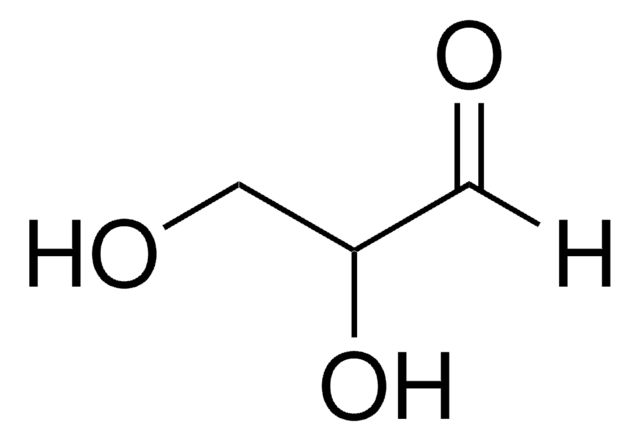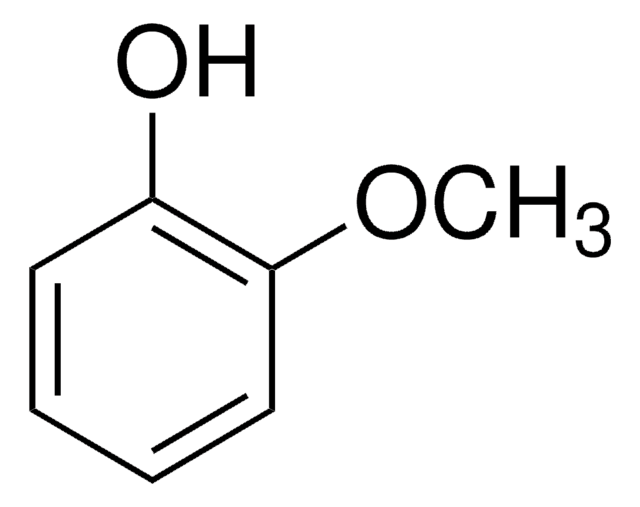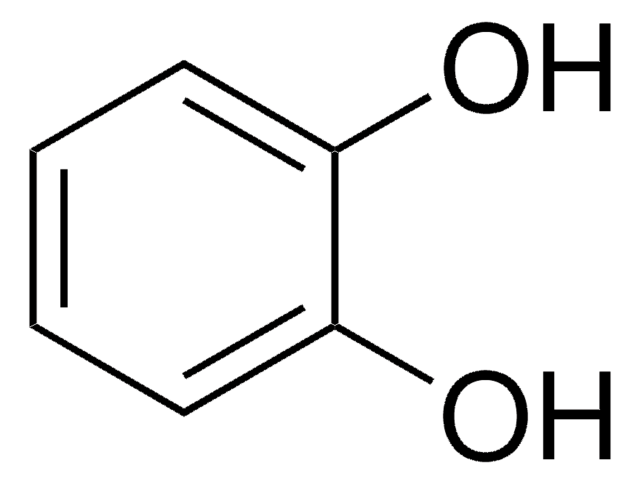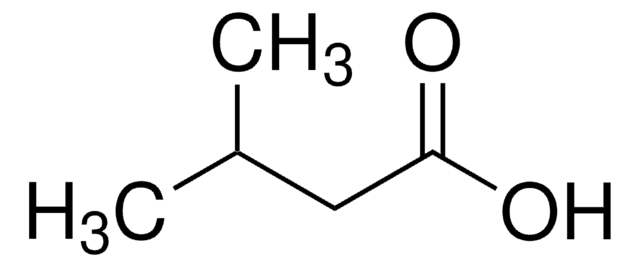Recommended Products
grade
SAJ first grade
vapor density
4.27 (vs air)
vapor pressure
0.11 mmHg ( 25 °C)
Assay
≥98.0%
form
crystalline
availability
available only in Japan
refractive index
n20/D 1.543 (lit.)
bp
205 °C (lit.)
mp
26-29 °C (lit.)
solubility
water: soluble 23.3 g/L at 25 °C
density
1.129 g/mL at 25 °C (lit.)
SMILES string
COc1ccccc1O
InChI
1S/C7H8O2/c1-9-7-5-3-2-4-6(7)8/h2-5,8H,1H3
InChI key
LHGVFZTZFXWLCP-UHFFFAOYSA-N
Looking for similar products? Visit Product Comparison Guide
Biochem/physiol Actions
Signal Word
Warning
Hazard Statements
Precautionary Statements
Hazard Classifications
Acute Tox. 4 Oral - Eye Irrit. 2 - Skin Irrit. 2
WGK
WGK 1
Flash Point(F)
194.0 °F
Flash Point(C)
90 °C
Personal Protective Equipment
Regulatory Information
Certificates of Analysis (COA)
Search for Certificates of Analysis (COA) by entering the products Lot/Batch Number. Lot and Batch Numbers can be found on a product’s label following the words ‘Lot’ or ‘Batch’.
Already Own This Product?
Find documentation for the products that you have recently purchased in the Document Library.
Our team of scientists has experience in all areas of research including Life Science, Material Science, Chemical Synthesis, Chromatography, Analytical and many others.
Contact Technical Service





